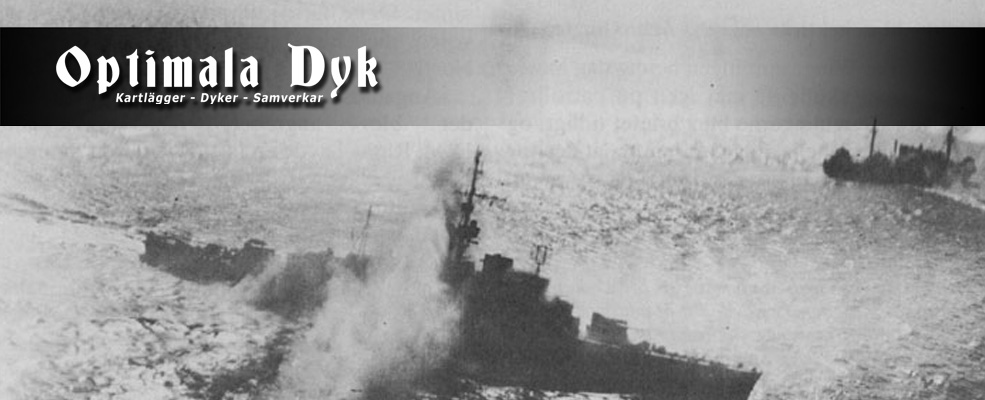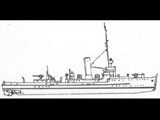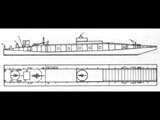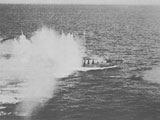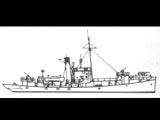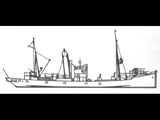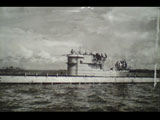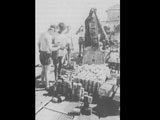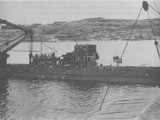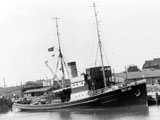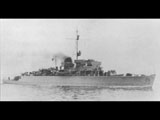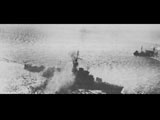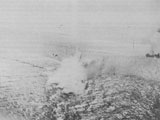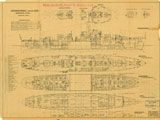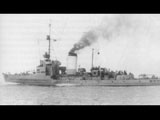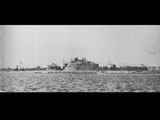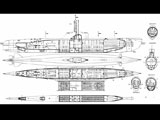War in the Kattegat 1939-1945.
A article in seven parts.
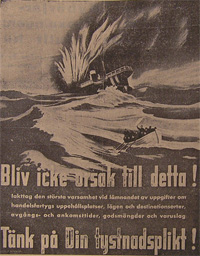
Part 7: 1945
In 1945, the British attacks on German tonnage in the Kattegat could be intensified when they put extra tanks of fuel on their aircraft and thus had a longer flight time than before. This made it possible to patrol the entire Kattegat. In January and February, the weather was bad but during the month of March an extra squadron of Mustang planes was transferred from Fighter Command to support the 18th group's attacks. This meant that the Allies now had two Mustangs squadrons, the 19th and the 65th, and in March more than 80 attacks were carried out on German ships in the Kattegat.
Between January 6 and February 26, the RAF carried out several mine laying missions during flights in the Kattegat for 16 nights.
At 0845 hrs on 13 January, a Halifax plane with serial number JP329 crashed near Landvetter after being on patrol over the Kattegat. The aircraft had been hit by German ship air defense. The two crew members survived.
On January 17, a B24H, Liberator bomber, with serial numbers 41-28963 of anti-aircraft fire was hit while on a mission over Harburg south of Hamburg. Shortly after dropping their bombs, they were hit by anti-aircraft fire and the crew set off for Sweden. Over Falkenberg, the crew jumped from the plane with parachutes. All survived and met a few hours later at the Grand Hotel in Falkenberg after being taken there by the Swedish military.
Late in the evening of January 25, 1945, the British Liberator plane with serial number KG964 took off from its base to operate in the Kattegat. Just before 3 am on January 26, they spotted the German minesweeper M-584, which was attacked and sunk. During the attack, KG964 was hit by anti-aircraft fire and plunged into the sea at 0304 hrs. A body was later found near Varberg and buried there. The other ten were never found. In Hallandsposten, one could read at the time of the incident that the local pilots on Käringön during the evening heard a strong detonation at sea and saw a strong light.
On February 21, the German transport ship Porto Alegre was bombed by British aircraft and sank. Porto Alegre was built in 1921 at the Flensburger Schiffbau in Flensburg and measured 144 m long and 19 m wide. Its grt was 6105.
Between March 1 and April 28, the RAF carried out several mine laying missions during flights in the Kattegat for 20 nights.
On March 1, the German minesweeper M-575 sank in the southern Kattegat during severe weather conditions.
On March 7, 45 Mosquito planes, one of which with photographic equipment, left Banff in Scotland at 1045 hrs along with 12 P51 Mustang planes from Peterhead, the 19th Squadron, and two Warwick planes for security to attack German transport ships in the Kattegat. At 1310 hrs, 8 German ships were observed near Anholt. With rockets and cannon fire from the aircraft, they managed to sink five German ships, the patrol boats V-1612 and V-1610 from the 16th V flotilla and Flottenbegleiter, landing boats, F-218 (type B), F-200 (type AM) and F -285 (type B). V-1610 was built in 1920 at the Reichwerf / Deutche werkr in Kiel as Innsbruck but was rebuilt at the end of May 1941 to V-1610. The ship measured 242 grt and was 41 m long and 8 m wide. V-1612 was built at Schiffswerfte & Machinenfabrik AG in Hamburg in 1920, then as S / fi Gotha but was rebuilt to V-1612 in August 1941. The ship measured 300 grt and was 42 m long and 7 m wide. The F-boats were built in 1941 at Deutche Werf and were 239 grt with a length of 47 m and a width of 6 m.
Two of the aircraft, Mosquito with the code designation O from 235 and Mosquito with the code designation R from 248, collided with each other during the attack and plunged into the sea, after which all on board died. The heavy anti-aircraft fire from the German ships forced the other Mosquito planes to return to Scotland.
On March 12, at 1735 hrs, Halifax aircraft took off from 58 to patrol the Kattegat. At 2058 hrs, the German transport ship Rolandseck was spotted, which was on its way from Aarhus to Norway with munitions on board. The Halifax bombers managed to sink the German vessel after dropping six bombs on the ship at 2147 hrs.
On March 22, Robert Müller VII was blown up by a mine outside Nidingen.
On March 23, the Norwegian steamship Utviken, 3502 grt, was sunk at the headland of Zealand.
On March 24, the German steamer Priamus, 661 grt, was sunk by British Halifax planes when the ship was on its way from Anholt to Larvik in Norway.
On April 1, the German patrol boat Vs-901 was sunk outside Ålborg after hitting a mine. The ship was built in 1921 at Schiffbunges Unterweser AG in Wesermünde as S / Fi Senator Sthamer and was 243 grt and measured 44 m long and 7 m wide. During World War II, she was rebuilt into the patrol boat V-901 and in February 1944, the ship was modified and given the designation Vs-901. At the end of December 1945, the wreck was salvaged.
On April 4, 1915, bombers from the 58th Squadron in Scotland took off. At 2325 hrs, two ships were spotted between Läsö and Gothenburg on their way from Århus with munitions up to Oslo in Norway. One of the ships was the Feodosia, which was sunk during the night of April 5. At 0025 hrs the ship had sunk.
On April 5, British Banff Strike Wing attacked with 39 Mosquito planes and their escort of 12 Mustang planes from the 19th in the Kattegat. They spotted a German convoy of four ships southeast of Anholt and managed to sink the patrol boat Helmi Söhle and the steam trawler Stutthof. During the attack, a Mosquito plane, with the code designation U from 235th, collided with the mast of one of the ships and plunged into the sea. Another Mosquito plane, with serial number RS619, was hit by anti-aircraft fire in the left engine and was forced to make an emergency landing in Hurup in Denmark. With the help of the resistance movement, the crew went to Sweden. A Mustang plane, with serial number KH450, crashed into the sea and the pilot died. Another plane, a mosquito with serial number RF724 from the 333rd, was hit by the German ships' anti-aircraft fire and later made an emergency landing in Sweden at Torslanda.
On April 8, a Liberator bomber with serial number KK259 participated in an anti-submarine mission in the Kattegat when the German steamship Carsten Russ (Depotschiff B) was spotted and sunk. Carsten Russ was built in 1910 at Stettiner Oderwerke AG in Szczecin and was 994 grt and measured 64 m long and 10 m wide. During the battle, Liberator KK259 was hit by German anti-aircraft fire and plunged into the sea.
On April 9, 39 Mosquito planes, one of which with photographic equipment, operated in the Kattegat together with five Mustang planes from the 65th and 19th. The aircraft had taken off from Banff at 1430 hrs and spotted and attacked three submarines at 1722 hrs, U-804, U-1065 which was on its way to Norway and U-843 which was a little further south and was on its way to Kiel in Germany. U-843 was built at AG Weser in Bremen in 1942 and was of the type IXC / 40. The ship was 1545 grt and its length was 77 m, and its width was 7 m. From the beginning, U-843 had operated in the Atlantic and then in the Far East where they managed to sink several Allied ships. At the end of the war, valuable cargo was picked up in Asia to take to Europe. In Singapore and Penang, they had taken on board tin, molybdenum, tungsten, raw rubber, quinine, and opium, as well as various other goods. The idea was to go to Kiel via Norway.
The three submarines were sunk but the Germans managed to shoot down a Mosquito plane DZ592 from the 235th and three other Mosquitos, with serial numbers RS562, RS598 and RS631 from the 248th, were hit by anti-aircraft fire and forced to make an emergency landing on F7 Såtenäs outside Gothenburg. In 1958, U-843 was salvaged and large parts of the cargo were recovered. The submarine itself was scrapped.
On April 10, British Halifax bombers from the 58th and 502nd sank the German transport vessel Hansa 1 and the torpedo boat T-13, which sailed southeast of Läsö. The T-16 that also went as security was damaged in the attack. Later, T-16 was destroyed in an attack by RAF in Fredrikshamn.
On April 12, the German troop transport ship Ostland, which went in a convoy with Bretagne and the escorts Beitzen and Ihn and F4 and F7, west of Anholt, was damaged by British bombers as they were on their way to Ålborg with 1250 soldiers on board. The attack was carried out by 58th. Ostland was towed to Aarhus.
On April 13, the tugboat Wotan sank off the headland of Zealand after hitting a mine laid out by a British minesweeper. The ship was built in 1925 at the Germaniawerft in Kiel and measured 48 m long and 8 m wide and had a gross tonnage of 357. In 1932 the ship was bought by Kriegsmarine.
In the afternoon of April 19, 23 Mosquitos from the 235th from Banff together with 12 Mustang planes from the 65th attacked the German submarines U-251, U-2502 and U-2335 and their security escort, M-403 in the Kattegat at 1631 hrs. The ships were at the time on their way from Kiel to Norway. U-251 and M-403 were sunk while the other two submarines escaped with minor injuries because they had time to dive and could, after a short repair in Aarhus, continue towards Norway. Two British Mosquito planes and a Mustang plane, which acted as escorts, were damaged by German air defences and one, RS607, crashed in Denmark and the crew died. Mosquito RS612 made an emergency landing on F14 in Halmstad. The Mustang plane KH695 made an emergency landing on Getterön in Varberg.
At 11 pm on the evening of 19 April, large foreign aircraft were noted over Strömstad. The plane came from the south and was heading north towards Norway. From Sweden, the plane was fired upon, after which the lanterns on board were extinguished. Later in the night until April 20, a German convoy was attacked by British Halifax planes from the 58th and 502nd. The convoy was on its way from Fredrikshamn to Århus. A minesweeper swept in front of two steamships and the Treuenfels, one of Germany's largest transport ships which at the time was loaded with iron ore. Hallandsposten reported at the incident that fishermen from Hunnebostrand at the time were nearby fishing for mackerel and that the detonations were so strong that the boats heeled and shook. However, the aircraft left the fishing vessels alone as they had lit lanterns. The ships escaped an hour after midnight with minor damage. Treuenfels was hit by two bombs but made it to Grenå.
During the night of April 21, the German minelayer Ostmark was sunk by British bombing.
At 0120 hrs on April 22, the German transport ship Neukuhren was bombed outside Fredrikshamn by British Halifax planes. The ship was hit by two bombs and sank at 0215 hrs. The Neukuhren was built at Chantiers & Ateliers de la Gironde in 1923 and was originally called Thermaikos but was seized by the Germans when it was in Antwerp in 1940. The ship was 4518 grt and 120 m long and 16 m wide.
On April 24, the German transport ship Tübingen was sunk southwest of Läsö by British Halifax planes from 502 The ship was at the time on its way from Norway to Germany. During the attack, a Halifax plane JP336 was shot down by the German air defense and sank shortly after it lay and burned to the surface for a while.
During the period 2-6 May, the British carried out heavy RAF attacks on German submarines in the Kattegat.
On May 2, 33 Mosquitos from the Banff Strike Wing and escorts from the 19th and 65th operated in the Kattegat. Just before 09 o'clock in the morning, the German ships were spotted from the plane
U-2359 and M-293 just east of Läsö. The ships were on their way from Fredrikshamn to Norway. The British managed to sink both ships but one of the Mosquito planes was damaged and shortly after 09 o'clock a Mosquito RS620 made an emergency landing on F7 Såtenäs. The crew survived and when they were interrogated, they announced that they had been out on an anti-submarine mission across the Kattegat when one of their engines was damaged and they flew towards Sweden.
At 1545 hrs on May 4, British aircraft spotted a German convoy with six ships on their way to Aarhus. The troop transport vessel Angamos, the transport vessel Wolfgang L.M. Russ and their escorts K1 and M-301 and K3 as well as the minesweeper Stettin who lay a bit in front of the other ships and swept. The German ships received some damage and Wolfgang L.M. Russ exploded and sank as it was on its way ashore with its cargo of ammunition. The M-301 also sank as well as the gunboat K1 which was built at Stulcken Sohn in Hamburg in 1941 and was 1890 grt and measured 62 m length and 11 m width. The minesweeper Stettin was damaged, as were K3 and Angamos. Later in the day, the ships were attacked again, this time by the North Coates Strike Wing with 126th as an escort.
On May 4, Banff attacked with 39 Mosquitos and an escort of 18 Mustang planes from 19th and 234th German convoys in the Kattegat and sank the German patrol boat Vs-923 in Aarhus Bay. Three Mosquito planes were damaged in the attack. Mosquito RS568 from 235th crashed west of the field on Getterön in Varberg at 1550 hrs. The pilot died when he did not have time to get loose before the plane burned and the ammunition on board exploded. The scout managed to jump out of the plane immediately when it landed. The second, RS623 from 235th, landed on F7 at 4 pm and the third, RS501 from 143rd, which did not find F7, made an emergency landing at 1630 hrs in Trollhättan. A Mustang plane, KH860, crashed in Denmark. Two other Mustang planes, KH674 and KH618 collided during the attack and plunged into the sea. All on board perished.
At 0800 hrs on 5 May, German troops capitulated in Denmark, the Netherlands and northwestern Germany.
At noon on May 5, the Liberator bomber sank the German submarine U-579 with submarine bombs.
On May 5, 1930, the German submarine U-534 was attacked by four British B24, Liberator bomber planes, from 547th and 86th. Anti-aircraft fire was fired from the submarine and they managed to shoot down one of the planes, Liberator KK299 from the 547th, when this made an attack on the submarine. The plane plunged into the sea some distance from the submarine. The other three bombers managed to sink U-534. The survivors from the submarine and some bodies were picked up by two small ships, one of which went to Århus and the other to Ålborg. U-534 was salvaged in 1993 when it was thought there was gold on board. However, the submarine turned out not to contain anything beyond what is usual on a submarine. The boat is now in a museum in England. U-534 was of the type IXC / 40 with a grt of 1545 and a length of 77 m and a width of 7 m. The ship was built in 1942 at Deutsche Werft AG in Hamburg.
On May 6, British Liberator bombers from 224th sank U-3523 when the ship was on its way to Norway. All on board perished. U-3523 was built at F. Schichau in Danzig in 1944 and was of type XXI. The ship was 2100 grt and 77 m long and 8 m wide. On the same day, the Germans on board U-1008 sank their submarine themselves after being pursued by British Liberator aircraft while heading north towards Norway. The submarine was built in 1943 at Blohm und Voss in Hamburg and was of the type VIIC / 41 with a grt of 1070 and with a length of 67 m and a width of 6 m.
On May 6, the German submarine U-3503 had an engine failure and entered Swedish waters at 0750 hrs. The Germans repaired the submarine while they were observed by the Swedish Navy with the destroyers Gothenburg and Norrköping. On May 8, it became clear that German forces had capitulated in Norway and the crew on board the submarine became more cooperative. As it leaked, they agreed to tow it in, but when they were outside Måseskär, they decided on board U-3503 to sink the ship. In 1946, the Swedes salvaged the submarine, which was equipped with new technology that they took advantage of in their own production of submarines. U-3503 was built in 1944 at F. Schichau in Danzig and was of type XXI with a grt of 2100 and with a length of 77 m and a width of 8 m.
On May 8, the war in Europe was officially declared over. On the same day, the Germans sank U-2365 in the Kattegat. The submarine was built in 1944 at Deutche Werft AG in Hamburg and was of type XXIII with a grt of 275 and a length of 35 m and a width of 3 m. In 1956 the submarine was salvaged.
On May 11, the war in Norway was officially over.
On June 30, the Swedish military preparedness was terminated by government decision.
On August 9, the German minesweeper R-228 sank in the Kattegat after hitting a mine when it cleared mines after the war.
